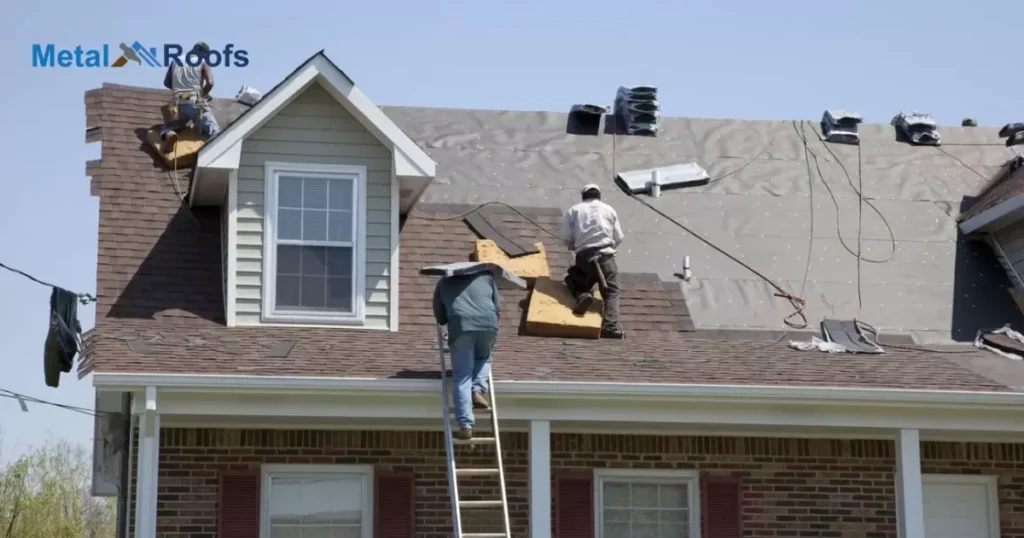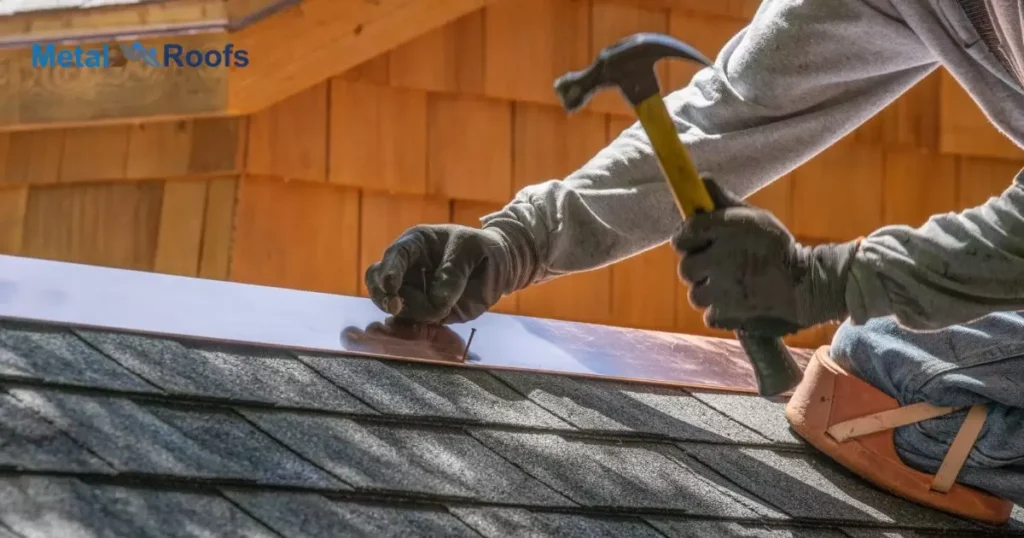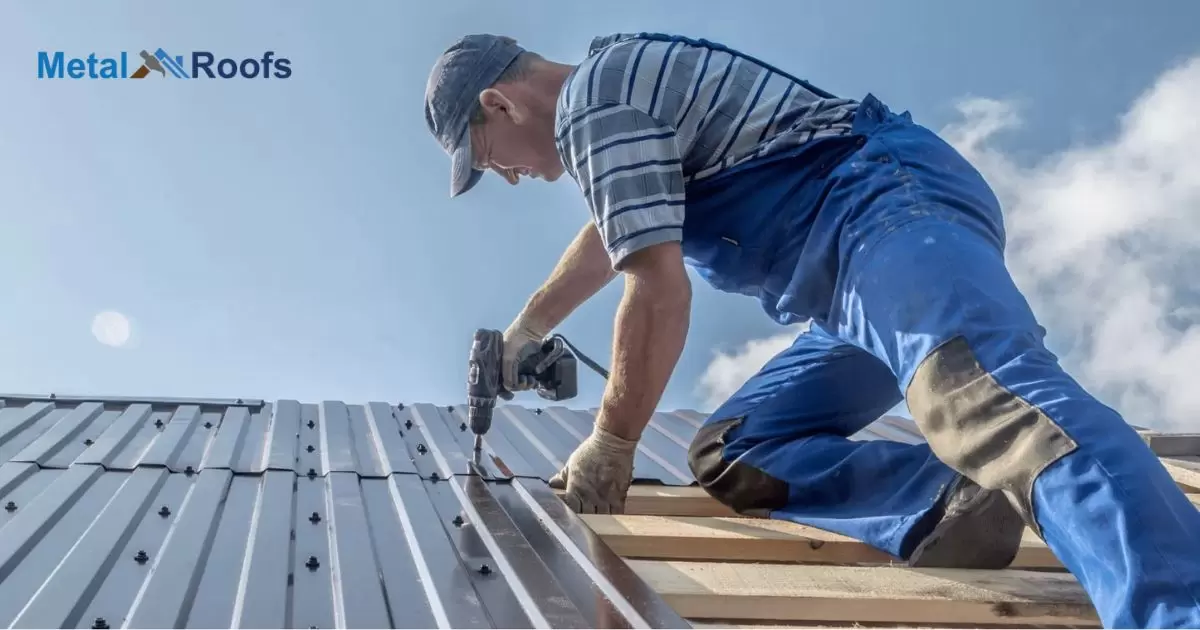Metal roofs can develop leaks from screws backing out over time. To fix, clean screw holes, apply rubberized sealant or silicone caulk, then add an oversized screw with a rubber gasket to seal the hole – creating a waterproof barrier that prevents further leaking.
Metal roofs can spring leaks. Screws backing out cause holes around the screws. Water seeps in through those tiny holes. Stop roof leaks with simple repairs. Learn how to patch screw holes in metal roofs. Just a few handy steps make your roof watertight again.
Screws in metal roofs loosen over time. This leaves gaps for water to leak in. Leaks lead to interior damage. Prevent leaks by sealing these problem spots. Just follow a few key steps to patch holes properly. Then enjoy a watertight roof once more.
Key Takeaways
- Roof sealant or metal patching compound are effective for screw hole repairs.
- Clean and dry the area before applying patching material.
- Smoothly apply the sealant or compound to ensure a watertight seal.
- Consider sanding and painting the patched area for a finished look.
- Regular inspection and maintenance help prevent future leaks and damage.
Durability of Metal Roofs
Metal roofs last for decades, offering long-term protection. They withstand harsh weather conditions, including heavy rain and snow. Their sturdy construction minimizes the risk of damage.
These roofs require minimal maintenance, saving time and effort. With the installation of a roof valley rain diverter no gutter, they can effectively direct rainwater away from the structure. They resist fire, rot, and insect infestations effectively. Overall, metal roofs prove durable, ensuring peace of mind for homeowners.
How Much Does It Cost to Repair a Metal Roof?

Repairing a metal roof costs vary depending on factors like size and damage extent. Small fixes, like patching screw holes, may cost less than larger repairs. Metal patching compounds or roof sealants are common materials used for small repairs.
For extensive damage, such as large holes or rusted areas, costs can increase. Professional repair services might charge more for complex jobs. Regular maintenance helps avoid costly repairs by catching issues early.
Unique Considerations With Metal Roofs
When dealing with metal roofs, there are unique considerations to keep in mind. Firstly, metal roofs can expand and contract with temperature changes, so proper installation is crucial to prevent leaks. Choosing the right type of metal for your roof can impact its durability and resistance to corrosion.
Another factor to consider is maintenance, as metal roofs may require occasional inspections to check for loose screws or rust spots. Keeping debris such as leaves and branches clear from the roof’s surface can also prevent potential damage. Overall, understanding these unique aspects of metal roofs can help ensure they remain in optimal condition for years to come.
How Cloud Roofing Would Repair A Metal Roof?
Cloud Roofing fixes metal roofs by assessing, cleaning, sealing, and patching holes. They use sealant for small holes and a patching compound for larger ones. After drying, they sand and paint the patched area to match the roof. Inspections ensure the repair’s effectiveness and guide future maintenance.
Clean The Repair Area
To begin repairing a metal roof, Cloud Roofing first cleans the repair area thoroughly. They use a wire brush to remove any rust or debris around the screw hole. Wiping the area with a clean cloth ensures it’s dry and ready for sealing or patching. This step is crucial for ensuring the effectiveness and longevity of the repair.
Scuff The Metal
To repair a metal roof, Cloud Roofing starts by scuffing the metal’s surface lightly. This helps the sealant or patching compound adhere better. Scuffing ensures a strong bond between the repair material and the metal roof. It’s a crucial step in ensuring the effectiveness and longevity of the repair.
Measure Repair Area & Cut Material
To repair a metal roof, Cloud Roofing starts by measuring the repair area and cutting the necessary materials. They use precise measurements to ensure a proper fit. Cutting the material accurately is crucial for a successful repair. This step sets the foundation for the rest of the repair process.
Install The Patch For Repair
Cloud Roofing installs patches for repairs by assessing, cleaning, and securing them over damaged areas. They ensure proper adhesion to prevent leaks and further damage.
Fully Secure The Patch
To fully secure the patch, Cloud Roofing ensures it covers the hole completely. They press down firmly to create a tight seal. Inspecting the patch guarantees its effectiveness, preventing future issues.
Painting & Finishing Touches
After patching the holes, Cloud Roofing focuses on painting and finishing touches. They sand any rough edges to ensure a smooth surface. Then, they carefully apply paint to match the roof’s color. Once finished, the repaired area seamlessly blends in with the rest of the roof, ensuring a professional and polished appearance.
Repairing Holes In Corrugated Iron Roof
Repairing holes in a corrugated iron roof is crucial for preventing leaks and maintaining the roof’s integrity. Start by gathering necessary materials like patching compound and a putty knife. Clean the area around the hole with a wire brush and wipe it dry with a cloth.
Apply the patching compound generously to cover the hole completely. Smooth it out with the putty knife and let it dry according to the instructions. Inspect the repair periodically to ensure it holds up against weather and wear.
Metal Roof Patching Material

| Material | Description |
| Roof Sealant | A specialized material typically in a caulk-like form designed to adhere to metal surfaces. Suitable for sealing smaller holes and cracks effectively. |
| Metal Patching Compound | Specifically formulated compound for patching larger holes or areas with significant damage on metal roofs. Offers excellent adhesion and weather resistance for durable repairs. |
For patching metal roofs, you can use specialized materials like roof sealant or metal patching compound. These materials are designed to adhere to metal surfaces and provide a durable, watertight seal.
Roof sealant comes in a caulk-like form and is suitable for smaller holes and cracks, while metal patching compound is ideal for larger holes or areas with significant damage. Both options offer excellent adhesion and weather resistance, ensuring long-lasting repairs to your metal roof.
Frequently Asked Questions
How do you cover screw holes in metal?
To cover screw holes in metal, use metal patching compound or roof sealant, applying it over the hole and smoothing it for a watertight seal.
What is the best sealant for metal roof screws?
Silicone-based roof sealant is often considered the best option for sealing metal roof screws due to its excellent adhesion and weather resistance.
What can I use to seal screw holes in my roof?
You can use roof sealant or metal patching compound to seal screw holes in your roof effectively.
Conclusion
Metal roofs suffer screw leaks. Fixing holes prevents damage below. Just clean, apply sealant and replace screws. Use rubber gaskets to waterproof them. Then enjoy leak-free living once again. Annual roof checkups catch problems early.
Left unchecked, leaks cause big issues. But this easy repair prevents headaches. Take time when sealing holes thoroughly. Verify no gaps or cracks remain. Finish by checking your work in the rain. Then relax knowing your roof is fixed properly.











